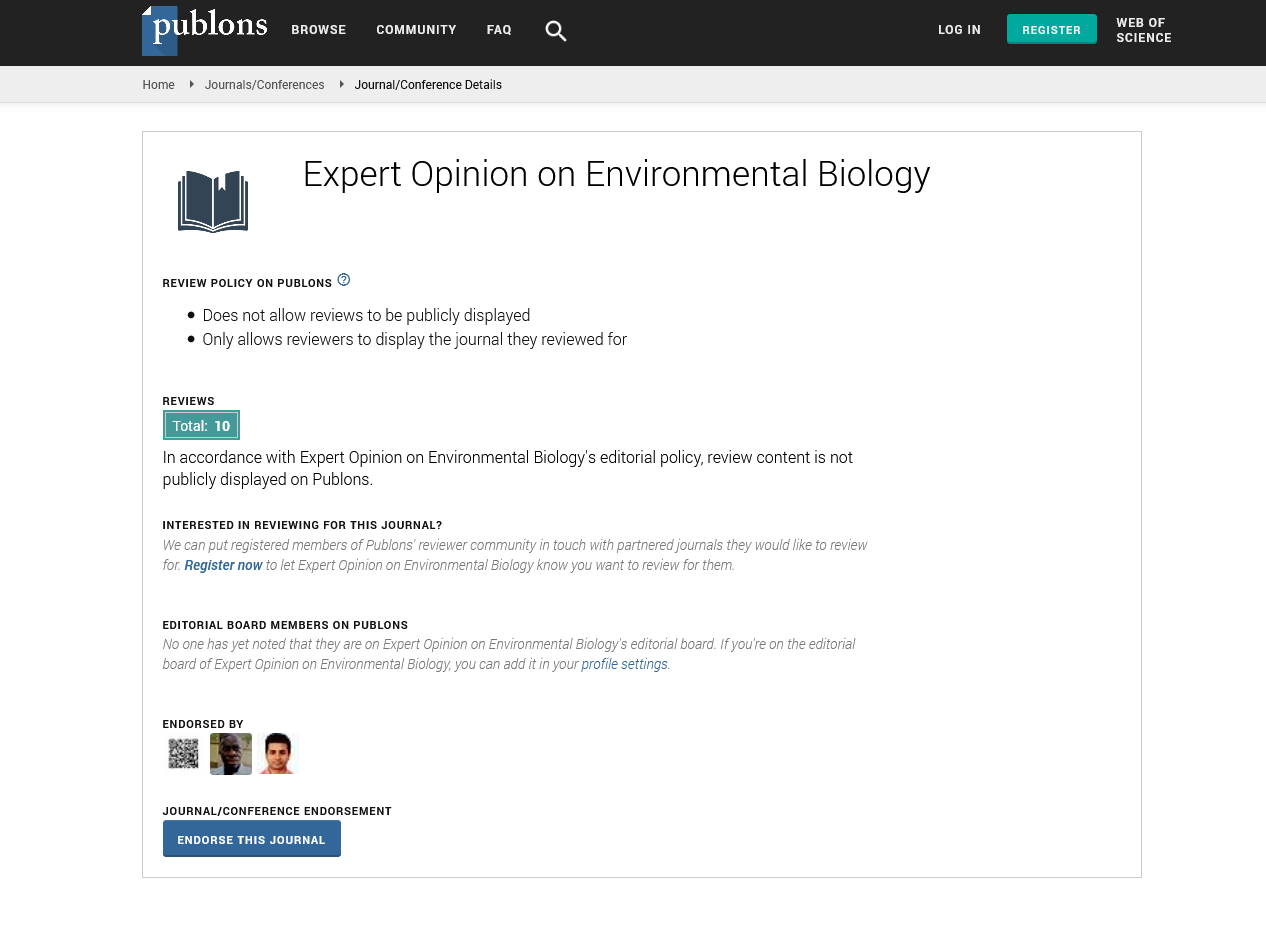Use of passive sampling methods to understand sources of mercury and other pollutants to high elevation sites in the Western United States
Jiaoyan Huang and Mae Sexauer Gustin
University of Nevada, USA
: Expert Opin Environ Biol
Abstract
Passive samplers have been used for atmospheric gaseous oxidized mercury (GOM) concentration and dry deposition measurements over the last decade; however, there are still uncertainties associated with these methods. This study investigated GOM ambient air concentrations and dry deposition at 10 sites in the Western United States (US) using passive samplers, and compared GOM dry deposition with multiple-resistance modeled values. Higher GOM concentrations and dry deposition were measured at 5 high elevation sites (>2000 m) relative to those at 4 low elevation sites (<2000 m) (n=5-27 depending on the site), except for one that was located in a topographic bowl. High dry deposition was due to the high wind speed, increasing turbulence and interaction with surfaces, and input from the free troposphere at high elevation sites. High GOM events at the two most frequently and consistently sampled high elevation sites (Peavine Peak and Angle Peak) showed contributions from urban boxes (Las Vegas and Los Angeles) and the marine boundary layer; however, spring events showed high values associated with Asian long range transport, determined using back trajectories analysis. Meteorological data at these two sites were extracted from EDAS 40 km, and multiple-resistance models were used to estimate the dry deposition velocity. The GOM dry deposition velocity at this two sites was ~2.2 cm/s without canopy resistance; however, the velocities were ~0.4 and 0.90 cm/s as α=β=2 and α=β=10, respectively. Using the GOM dry deposition fluxes were measured by aerohead at these two sites that ranged from 2.3 to 2.9 ng/m2/hr. Using this information average ambient air concentrations at these two sites was calculated and was found to be 30-200 pg m-3 depending upon the canopy resistance.
Biography
Jiaoyan Huang is an atmospheric pollution Scientist at the University Nevadahas conducted ambient air monitoring, dispersion, and receptor modeling for dioxin, mercury, aerosol, and other trace gaseous at multiple sites, and has developed new methods for measurement of ambient air Hg dry deposition and GOM concentrations. He earned his PhD degree in Civil and Environmental Engineering at Clarkson University.
Email: huangj1311@gmail.com
 Spanish
Spanish  Chinese
Chinese  Russian
Russian  German
German  French
French  Japanese
Japanese  Portuguese
Portuguese  Hindi
Hindi 
